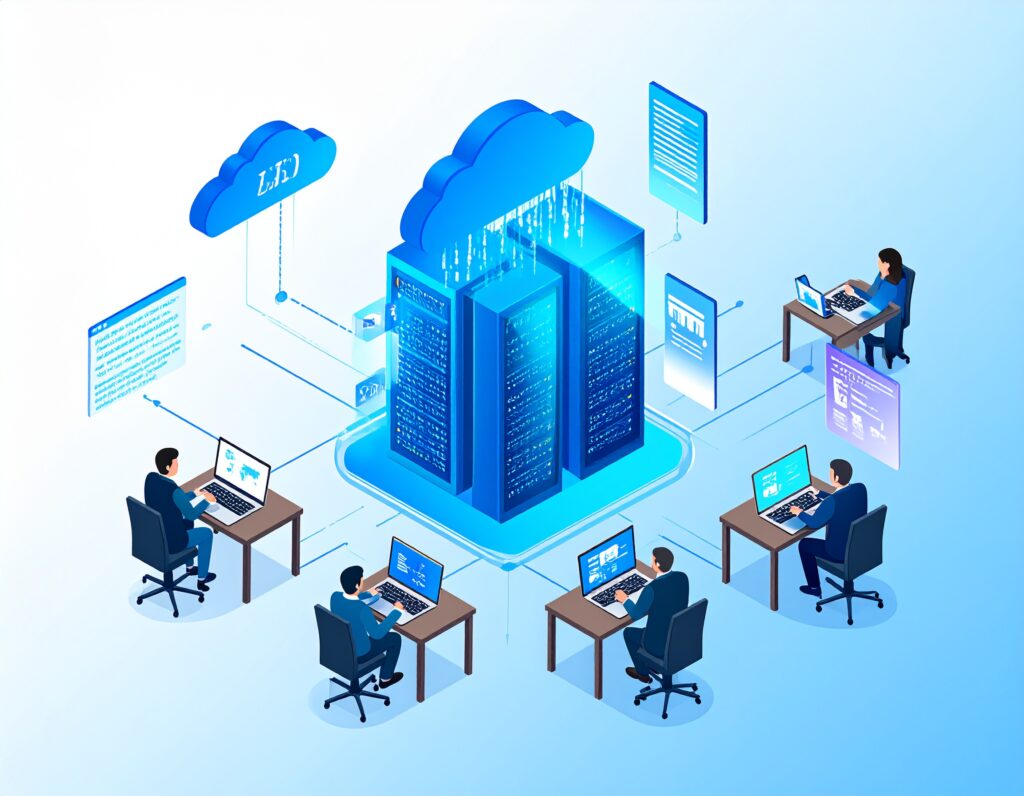Serverless computing lets small and medium-sized enterprises (SMEs) deploy individual functions without provisioning or maintaining servers, paying only for actual execution time instead of idle capacity (Cloudflare). Many startups have slashed monthly cloud bills from $5,000 to as little as $400–$600 by migrating key workloads to AWS Lambda or similar platforms (samo.is). Automatic scaling handles traffic surges seamlessly, while idle periods incur virtually no cost (Technology Solutions).
Typical use cases—web APIs, event-driven data processing, and scheduled jobs—map neatly to Function-as-a-Service (FaaS) models, enabling rapid prototyping and iterative improvement (hugoconnect.com). To succeed, SMEs must plan for security (least-privilege roles, code isolation), observability (structured logging, distributed tracing), and portability (abstracting vendor APIs) from day one (Sysdig, LinkedIn). Looking ahead, edge-serverless fusion, composable architectures, and AI-driven orchestration will unlock even more agility and cost savings (GeeksforGeeks, XenonStack).
1. What Is Serverless Computing?
1.1 A Simple Definition
Serverless computing is a cloud model where you write and deploy discrete functions while the provider dynamically handles server provisioning, scaling, and maintenance (Cloudflare). You’re billed only for the exact compute time your code consumes—no charges for idle capacity (ResearchGate).
1.2 Why SMEs Should Care
For resource-constrained businesses, the serverless model slashes operational overhead and upfront costs. You avoid managing virtual machines or containers, freeing your team to focus on product features and customer experience (Technology Solutions).
2. Why SMEs Are Embracing Serverless
2.1 Dramatic Cost Savings
A notable case study saw a startup reduce its monthly cloud bill from $5,000 to $400–$600 by shifting ETL workloads to AWS Lambda (samo.is). ResearchGate analysis confirms SMEs save up to 35% annually through pay-as-you-go pricing and eliminated idle resource charges (applify.co).
2.2 Built-In Elasticity
Platforms like AWS Lambda, Azure Functions, and Google Cloud Functions automatically scale functions in response to demand spikes—and seamlessly scale down when idle (LinkedIn). This elasticity ensures performance stability during unexpected traffic surges (GeeksforGeeks).
2.3 Faster Time-to-Market
With infrastructure concerns abstracted away, development teams launch new features in days rather than weeks (Amazon Web Services, Inc.). SMBs can pilot ideas quickly, gather user feedback, and iterate with minimal setup time.
3. Common SME Use Cases
3.1 Web APIs & Microservices
Use serverless functions behind API Gateways to power REST or GraphQL endpoints—no server provisioning required (hugoconnect.com).
3.2 Event-Driven Data Processing
Trigger functions on file uploads, database changes, or message-queue events for tasks like image resizing, data validation, and notifications (Cloudflare).
3.3 Scheduled Jobs & Automation
Replace cron servers with simple scheduled functions for database cleanups, report generation, or batch analytics—only pay when the job runs (CloudOptimo).
4. Overcoming the Main Challenges
4.1 Security Best Practices
Serverless broadens the attack surface. Mitigate risks by enforcing least-privilege IAM roles, isolating functions per domain, and rotating credentials regularly (Sysdig).
4.2 Observability & Debugging
Ephemeral functions need specialized monitoring. Implement structured logging, distributed tracing (e.g., OpenTelemetry), and use tools like Datadog or Lumigo to pinpoint errors and latency (LinkedIn).
4.3 Avoiding Vendor Lock-In
Abstract provider-specific APIs using open-source frameworks (e.g., Serverless Framework, Knative) and design your code to swap out cloud-provider logic without rewriting business functionality .
5. Getting Started: A Step-by-Step Guide
5.1 Pick a Low-Risk Pilot
Choose a non-critical workload—such as image thumbnails or notification emails—to validate cost and performance (CloudOptimo).
5.2 Provision Your First Function
Use your provider’s CLI or console to write, deploy, and test a simple “Hello, Serverless!” function. Attach it to an HTTP endpoint or schedule (Amazon Web Services, Inc.).
5.3 Integrate Observability
Hook up structured logs (JSON format) to CloudWatch, Stackdriver, or a third-party dashboard. Enable distributed tracing and set alerts on error rates and invocation latency (LinkedIn).
5.4 Iterate and Expand
Once your pilot proves cost and reliability, expand to other workloads (data pipelines, backend jobs) in phases. Regularly review bills to confirm projected savings (applify.co).
6. What’s Next: Future Trends to Watch
- Edge-Serverless Fusion: Running functions at network edges (e.g., AWS Lambda@Edge) for sub-10ms latency in IoT and real-time analytics (XenonStack).
- Composable Architectures: Orchestrating micro-services and functions as modular business capabilities, enabling plug-and-play innovation (GeeksforGeeks).
- AI-Driven Orchestration: Autonomous scaling, error remediation, and performance tuning powered by machine learning insights (XenonStack).
Conclusion
For SMEs, serverless computing offers a low-barrier, cost-effective way to harness cloud power without the headaches of server management. By understanding core benefits, addressing security and observability challenges, and following a phased rollout plan, small businesses can scale confidently and compete alongside much larger enterprises—all while paying only for what they use.



